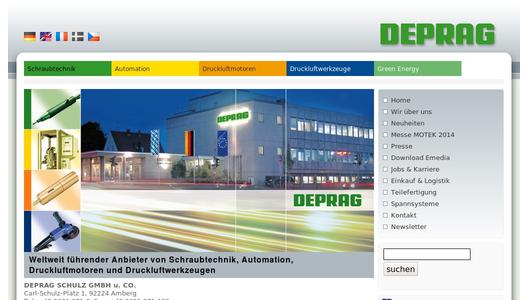The actual required force for connection of these two or more components to ensure a reliable and safe connection is the pre-load force. The lack of practical methods of measuring this pre-load force means that you are usually reliant on the torque as an aiding measurement in series assembly. When assembling with pre-cut thread the applied torque is the same as the pre-load force. But for self-forming or self-cutting screws a share of the applied torque is used during the thread forming or thread cutting process. The other share of the torque generates the pre-load force.
"So long as all influencing factors are repeated accurately within an acceptable framework then the assembly result with the tightening strategy "screw assembly to torque" is also repeated accurately and reliable processing is ensured", explains Jürgen Hierold, Sales Manager at DEPRAG SCHULZ GMBH u. CO.
Fluctuating screw-in torque influences pre-load force
Screw shaft diameter tolerances in the tapping drill hole, varying materials and divergent surface properties of the components to be assembled or the connection element can directly influence the forming or cutting torque. They also directly influence the share of the torque which is responsible for applying the preload force. Jürgen Hierold explains: "Imagine the following case: A connection element with a shaft diameter at the upper end of the tolerance parameter comes into contact with a tapping drill hole whose diameter is at the lower end of the tolerance range due to tool wear. We establish during the screw joint analysis that the thread forming or cutting process requires approx. 60% of the applied torque and just 40% is left to generate the preload force. If however the tolerances alter and a smaller shaft diameter comes into contact with a larger tapping drill hole then the screw assembly to torque seems at first glance to be ok. However the screw joint analysis will show that the forming and cutting process requires just 30% and the share of the torque responsible for the preload force is 70%. This can either lead in one case to the destruction of the component or in the other to an insufficient, faulty and unreliable screw assembly".
If you judge the quality of the screw assembly of self-forming or self-cutting screws on the basis of the torque values then the results received seem at first glance to be ok. The sensors in the screwdriver spindle register the specified end tightening value as ok. "However we know that the applied torque is proportionally shared in the forming or cutting process to preload force", emphasises the Sales Manager. "The aim for every screw assembly is therefore not a constant end torque value but a constant preload force".
In order to ensure a constant preload force even with fluctuating drilling torque the specialist for screwdriving technology DEPRAG has developed the friction value procedure. "The friction value procedure guarantees a constant preload force as the drilling torque has already been registered and calculated during the assembly process in order to determine the end torque required for the preload force.
Generate the preload force using the friction value procedure
Screw assembly using friction value procedure from DEPRAG is based on results from the screw joint analysis. In the torque development graph a threshold value for the angle measurement is assigned and based on the analysis a range for the friction value measurement is defined. From a sequence of torque measurement results an average or peak value - the friction value - is calculated. A difference torque is added to this. The shut off torque is the sum of the friction value and difference torque. "Using this method the differences in this procedure to those of other providers is clearly shown. We generate the friction value over the angle range rather than as others who use the connecting surface", outlines Jürgen Hierold. "The friction value determination via connecting surface is reliant on the increase in measurement value; we are reliant on a measurement range with many individual values and take the average from this. It is the more reliable method".
The preload force is applied reliably via the friction dependent torque screw assembly despite the appearance of fluctuations in the forming or cutting process. "Unfortunately as well as all these advantages there is also a disadvantage in this procedure", said Hierold. "The end tightening values are not constant due to the fluctuation forming torque. A quality evaluation of individual screw assemblies which is usually determined via the end tightening value e.g. using the Cmk-Index, is in this way, no longer an option". Available measurements for quality evaluation are the difference torque value or angle value, measuring from the threshold value up to the attainment of the shut-off torque. The success of the screw assembly can be tested optimally during the screwdriving process but the results at the end of the screw assembly are difficult to verify.
Nevertheless the friction measurement procedure is well established in the automobile industry, the electronic and electro-technology and mobile and telecommunications industries as well as household goods and medical industries.
At this year's MOTEK trade fair from the 6th to the 9th of October DEPRAG presents "Screwdriving - Feeding - Assembly" - varied solutions for screwdriving and assembly technology. The DEPRAG experts can be found in Hall 1 at Stand 1650 ready to answer any questions relating to your application.

